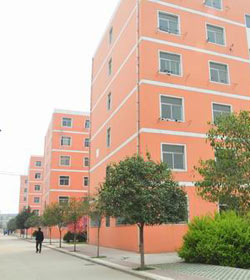2016年12月英语四级阅读练习题及答案(二十九)
2016-11-15 02:44:27pm
Antarctica has actually become a kind of space station a unique observation post for detecting important changes in the worlds environment. Remote from major sources of pollution and the complex geological and ecological systems that prevail elsewhere, Antarctica makes possible scientific measurements that are often sharper and easier to interpret than those made in other parts of the world.
Growing numbers of scientists therefore see Antarctica as a distant-early-warning sensor, where potentially dangerous global trends may be spotted before they show up to the north. One promising field of investigation is glaciology. Scholars from the United States, Switzerland, and France are pursuing seven separate but related projects that reflect their concern for the health of the West Antarctic Ice Sheet a concern they believe the world at large should share.
The Transantarctic Mountain, some of them more than 14,000 feet high, divide the continent into two very different regions. The part of the continent to the east of the mountains is a high plateau covered by an ice sheet nearly two miles thick. West of the mountain, the half of the continent south of the Americas is also covered by an ice sheet, but there the ice rests on rock that is mostly well below sea level. If the West Antarctic Ice Sheet disappeared, the western part of the continent would be reduced to a sparse cluster of island.
While ice and snow are obviously central to many environmental experiments, others focus on the mysterious dry valleyof Antarctica, valleys that contain little ice or snow even in the depths of winter. Slashed through the mountains of southern Victoria Land, these valleys once held enormous glaciers that descended 9,000 feet from the polar plateau to the Ross Sea. Now the glaciers are gone, perhaps a casualty of the global warming trend during the 10,000 years since the ice age. Even the snow that falls in the dry valleys is blasted out by vicious winds that roars down from the polar plateau to the sea. Left bare are spectacular gorges, rippled fields of sand dunes, clusters of boulders sculptured into fantastic shapes by 100-mile-an-hour winds, and an aura of extraterrestrial desolation.
Despite the unearthly aspect of the dry valleys, some scientists believe they may carry a message of hope of the verdant parts of the earth. Some scientists believe that in some cases the dry valleys may soak up pollutants faster than pollutants enter them.
1. What is the best title for this passage?
[A] Antarctica and environmental Problems.
[B] Antarctica: Earths Early-Warning station.
[C] Antarctica: a Unique Observation Post.
[D] Antarctica: a Mysterious Place.
2. What would the result be if the West Antarctic Ice Sheet disappeared?
[A] The western part of the continent would be disappeared.
[B] The western part of the continent would be reduced.
[C] The western part of the continent would become scattered Islands.
[D] The western part of the continent would be reduced to a cluster of Islands.
3. Why are the Dry Valleys left bare?
[A] Vicious wind blasts the snow away.
[B] It rarely snows.
[C] Because of the global warming trend and fierce wind.
[D] Sand dunes.
4. Which of the following is true?
[A] The Dry Valleys have nothing left inside.
[B] The Dry Valleys never held glaciers.
[C] The Dry Valleys may carry a message of hope for the verdant.
[D] The Dry Valleys are useless to scientists.
答案解析:
1. A 2. D 3. C 4. C
以上就是查字典大学网为同学们带来的“2016年12月英语四级阅读练习题及答案(二十九)”内容了,希望看完能够带给大家一些力量,对同学的生活有所启示,更多内容在这里,请继续关注我们。



